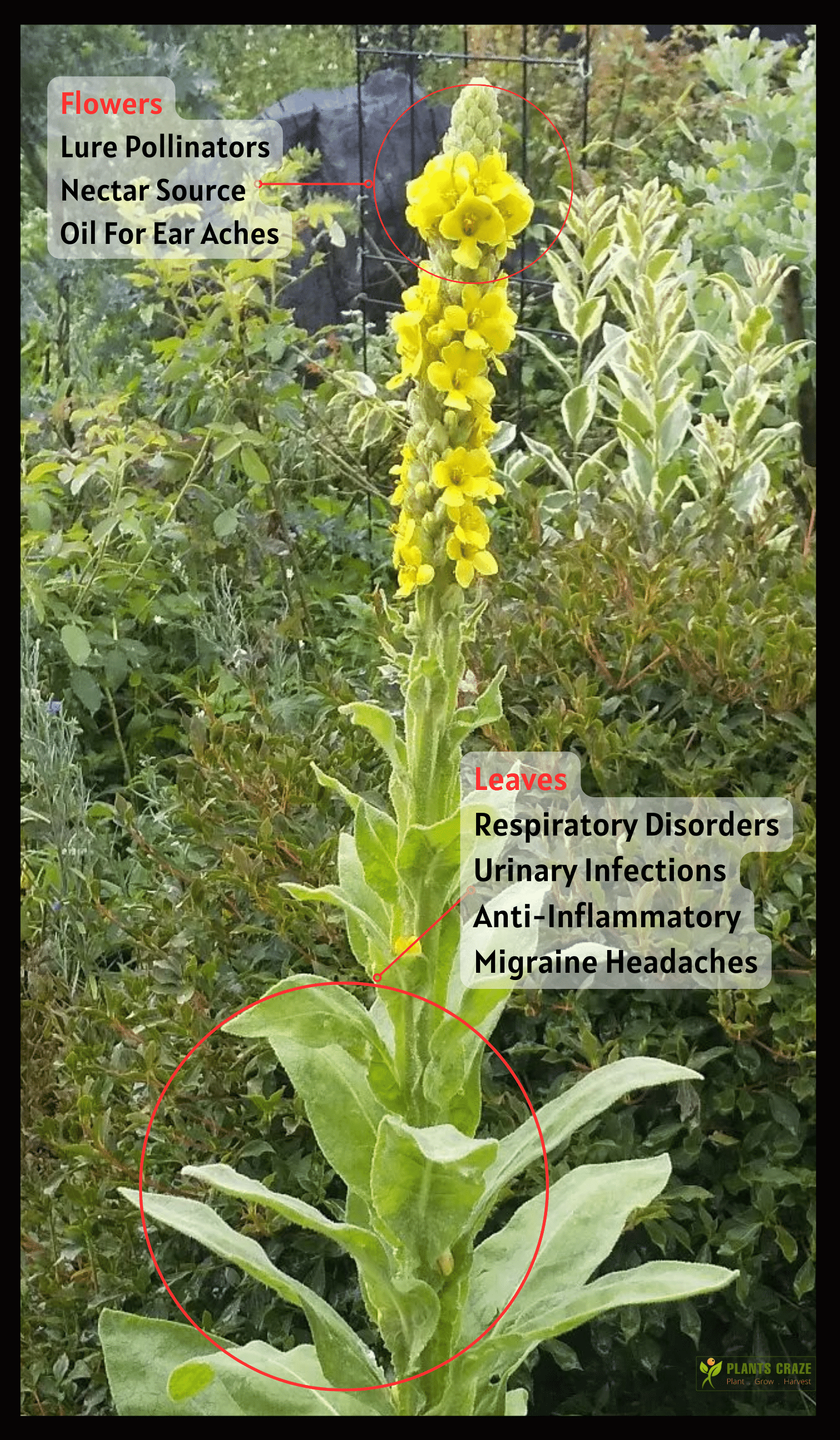Do you know Indian Toilet Paper Plant really lives up to its name? It is a natural way to clean your mess after your private time and also packs other benefits.
If you want to learn about this versatile plant in-depth, stick with the article until the end!
Table of Contents Show
Indian Toilet Paper Plant [Overview & Appearance]
Common Mullein or Indian Toilet Paper Plant (Verbascum thapsus) is a biennial evergreen plant belonging to the Scrophulariaceae family.
The plant is native to Europe, some parts of Asia, and a few regions of Africa.
Having an upright growth habit, Indian Toilet Paper attains a height of 6 feet owing to its yellow flowering stem rising from the center of the alternately organized rosette leaves.
The plant begets the flowering stem during the second year of its growth, bearing numerous discreet yellow flowers that attract butterflies and bees.
Further, these silvery green woolly or fuzzy leaves (7-24 inches long) are oval in shape and carry medicinal properties, along with acting as a substitute for toilet paper.
Health Benefits of Indian Toilet Paper Plant
The plant is full of bioactive compounds that have antibacterial and antifungal properties.
Other medicinal benefits of the plant include expectorant usage for respiratory infections (asthma, coughs, and pulmonary diseases), urinal diseases, migraine headaches, inflammatory infections, diarrhea, etc.

Benefits Of Using Indian Toilet Paper Plant
Due to their absorbent leaves, people have used the plant for centuries as an alternative to toilet paper.
However, the plant has other medicinal and garden-served benefits as well.
- The leaves of the plant are a cost-effective biodegradable toilet paper.
- Further, the soft leaves of the plant rarely cause any kind of skin allergies.
- The flower infusion of olive oil from the plant can be a superb remedy for earaches.
- Also, the plant’s flowers serve as a nectar source for bees and butterflies.
- Moreover, the dried foliage of the plant catches fire easily and is a survival firestarter.
But, if you want to enjoy the full benefits of the Indian Toilet Paper Plant, you must harvest the plant parts at different seasons.
Cons Of Using Common Mullein Plant
If you are using Common Mullein for benefits, you must also weigh its disadvantages.
- The leaves of the plant are not good at trapping odors.
- Further, the plant’s foliage doesn’t work perfectly for absorbing large amounts of water like regular paper towels.
- In some people with sensitive skin, the fuzzy leaves of the plant can cause potential allergies.
- The plant is also invasive in many parts of the world that can quickly outcompete native plants due to its tall stature and prolific seed production.
From Editorial Team
Grow your own natural toilet paper!
To grow Common Mullein, you must sow their seeds about 0.25-0.5 inches deep in sandy, loamy porous, slightly acidic soil (pH 6-6.5).
Since the plant leaves show spacious growth, keep the seeds at least 1 foot apart and maintain a soil temperature between 70-80°F.


